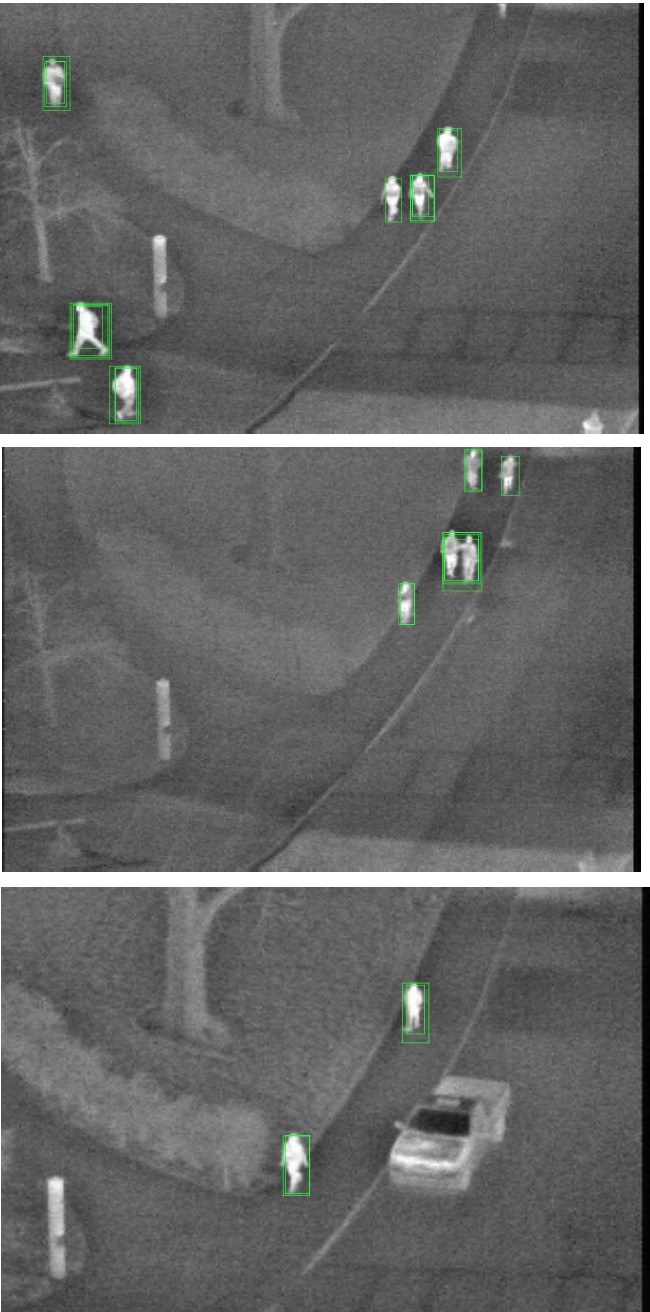Description
Detection of humans in low resolution infrared imagery is possible due to the few hot spots that appear due to the heat signature.
We propose a two-stage approach for human detection in LWIR images: (1) the application of Maximally Stable Extremal Regions (MSER) to detect hot spots instead of background subtraction or sliding window and (2) the verification of the detected hot spots using Integral Channel Features (ICF) based descriptors and a Naive Bayes classifier.
The approach is validated by testing on an LWIR image dataset containing low resolution videos in real-time. The approach is novel since it achieves high detection rates while possessing a low computational runtime, and unlike several related works in human detection, without assuming that the targets are moving in the image frame.

Test set results obtained from applying the Naive Bayes classifier
In this project, I followed a two-step approach for detecting humans in real-time using LWIR imagery captured by a camera mounted on a UAV. This particular approach focuses
on the low resolution imagery typical of UAV platforms and utilizes algorithms which can run on the limited computational power available. The approach is also robust to changing illumination and background conditions, unlike approaches relying on visual imagery. The approach consists of MSER hot spot detection followed by classification using Integral Channel Features and a Naive Bayes classifier.
We also showed the supremacy of this approach over SVM classifiers trained on the same features using a linear kernel and the radial basis function, respectively. However, this approach is prone to be very slow in high resolution imagery as the number of MSERs detected in such images can be quite large. The approach also performs poorly when applied to images with humans standing on relatively hot surfaces as the MSERs of the humans and the ground gets merged.



Reviews
There are no reviews yet.